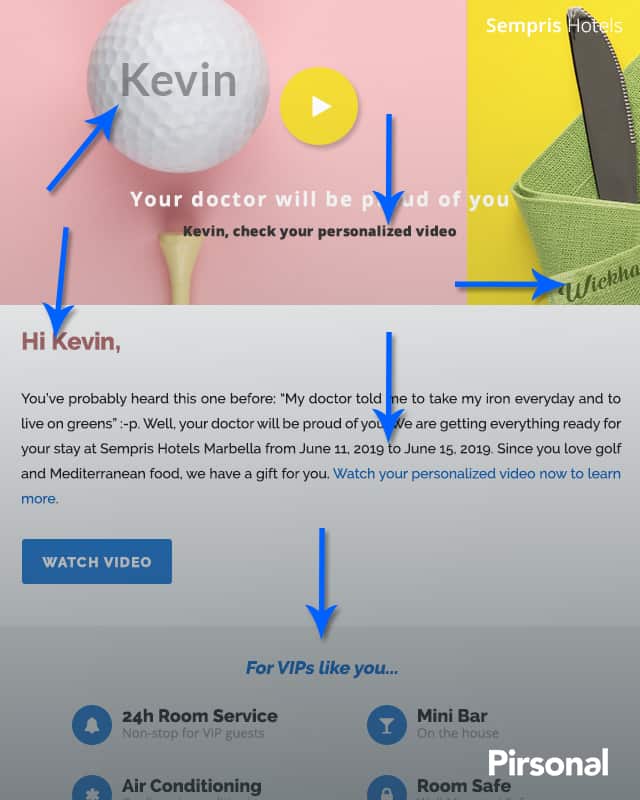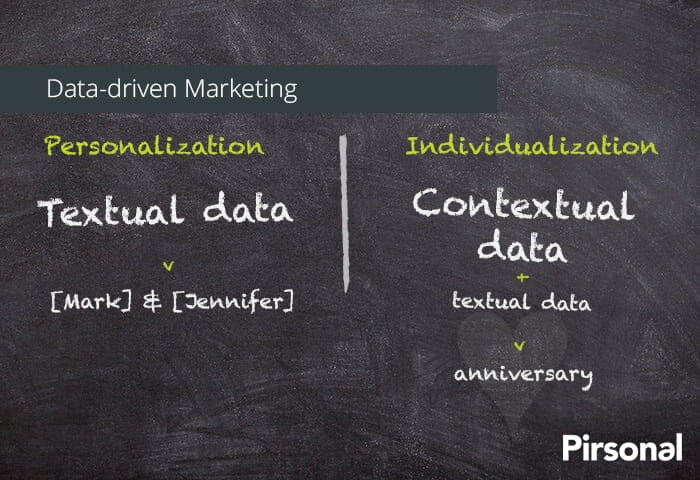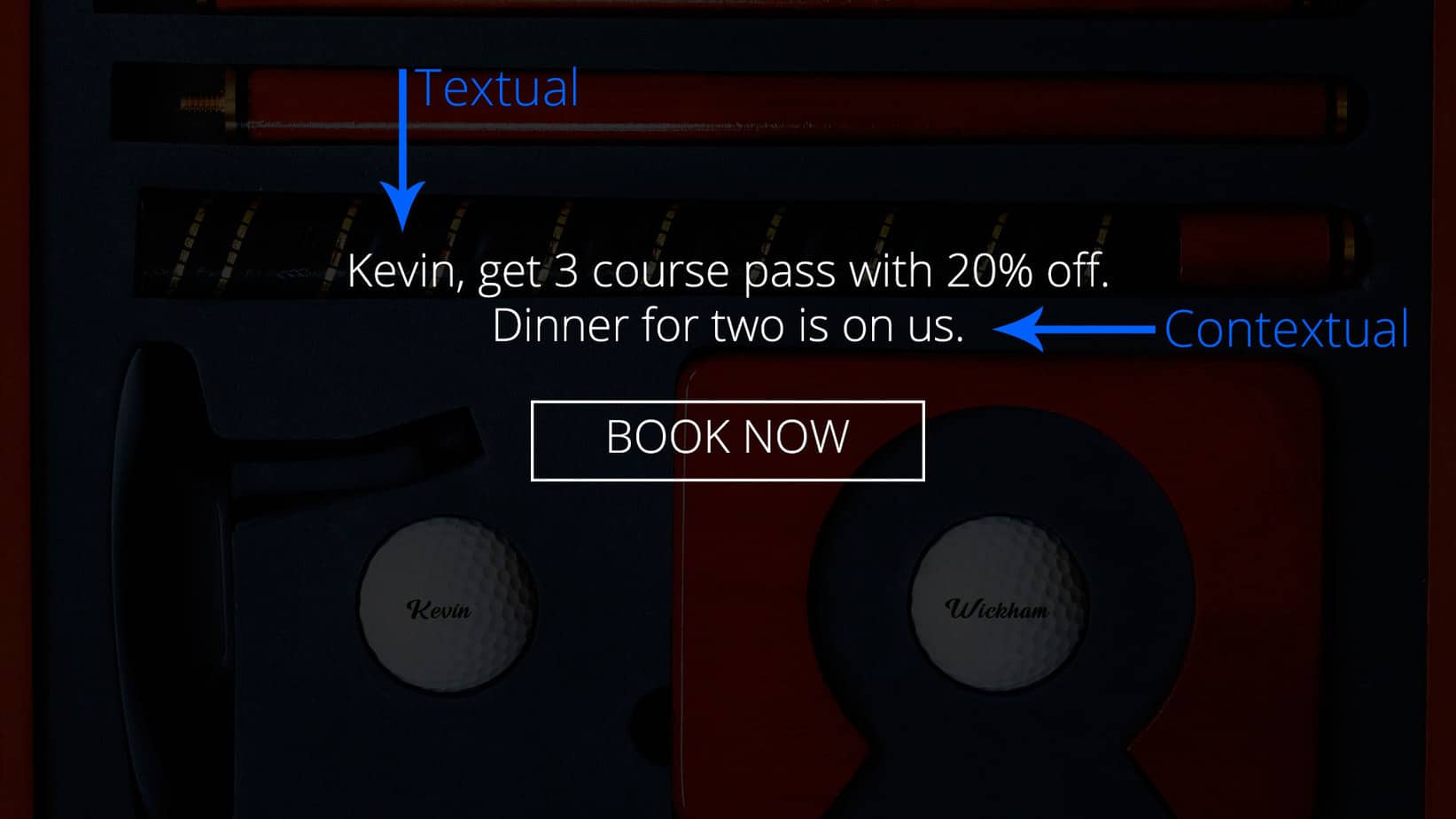Using a personalized call to action in your marketing messages can dramatically change your conversions. Let me explain why and how to use them in your personalized videos.
If you are reading this and are not originally from Mars, chances are that when you were a kid you got a “[Your Name], come – here – now” from a window, room or even 1 or 2 kilometers away from where you were. A direct and clear next step that a teacher, mom, brother… kindly requested from you :-p. Simple. Effective. Sweet. Personalization and calls to action have been part of our daily lives since we were born. It’s a perfect match. I can’t imagine my mom being ambiguous about what she wanted me to do or stop doing.
For both B2B and B2C marketers, calls to action or CTAs are a must. There is a really simple reason for this: What’s the point of creating a marketing message if you are not getting a reaction from your audience? This is why marketers should always focus on one main goal, a clear next step for your audience. The action you want them to take while they are still consuming your marketing message. This main goal should always be reflected in your content, regardless of the format, and lead the user to one specific action. The way to do this is through what we commonly call “calls to action”.
A call to action (CTA) is a marketing term that describes a frequently visual way that shows your audience what to do next. CTAs are usually displayed anywhere within your marketing content, from a blog post to a personalized video. You’ve probably noticed that I wrote: “…frequently visual way…”. The reason for this is because a personalized call to action can also take the form of an audio. As stated by Investopedia, to be effective, a CTA should be obvious.
Now that we are clear on what a call to action is, let’s deep dive into the wonderful world of personalized calls to action.
What Is A Personalized Call To Action
Imagine Kevin and his wife Karoline. They just made a reservation in a fancy hotel, where they’ve already been a couple of times. So the hotel already knows something about them. For example, they know Kevin likes to play golf and Karoline loves eating gourmet food. Let’s say he made the reservation and the hotel wants to increase the revenue per reservation. Improving the guest experience is certainly key.. What if we connect him with one of his biggest passions, Golf, but also help him to give his wife something special to share during their stay at the hotel?

How can you make Kevin react and buy more?
Personalization is the key. And in this example, it will help the hotel upsell and cross-sell new products and services, which means increasing the revenue per customer or guests. The end goal is to evoke a reaction from Kevin which will make him buy more from the hotel as soon as possible. Reacting translates into buying a golf course package and a discounted fancy and romantic dinner for two. This is how, in this example, you are killing two birds with one stone.
But how?
A personalized call to action (also known as a dynamic call to action) can be 200% more effective than a generic call to action. But, what is a personalized call to action? A personalized call to action is a type of call to action that uses dynamic information to address an individual or a situation based on targeted and contextual information and make that individual react. In other words, personalized calls to action are a great opportunity you shouldn’t miss.
There are several ways you can personalize a call to action with dynamic information. For example, when thinking about data-driven marketing, you can use textual information to get your lead’s or customer’s attention and contextual information to make the message directly resonate with his context and increase the chances for a higher conversion rate.
Take a look at the following infographic to better understand what textual data and contextual data are. Although we commonly use the term “personalization”, sometimes we might be trying to say individualization.

Now, with this in mind, please take a quick look at this personalized video screenshot with a personalized call to action:

Let’s analyze this personalized call to action to better understand the psychology behind this dynamic CTA and how to create a similar one on your own. This personalized call to action has three sets of texts.
- It starts with the customer’s name, Kevin, which is textual information. This helps to catch the customer’s attention.
- Then it offers value to this customer (“…get 3 course passes with 20% off.”) through a contextualized message by offering something that, potentially, is hard to resist. Depending on the type of service, perceived value and pricing, you could also say “get 199 USD off…” and A/B test what message gets better conversions.
- Then it shows another contextualized message that also involves another person (“Dinner for two is on us.”). If Kevin is going to a hotel with another person, chances are that he wants to be with that other person, right? :-p.
As you can see, when we use textual information, we use the data as it is. In this case, a first name. Contextual information “translates” the available marketing data into something that is useful to the individual you are targeting and aligned with your marketing goals.

How To Create A Personalized Call To Action
One of the easiest ways to create this type of personalized or dynamic call to action to analyze the mental process your leads and customer follow until they finally consume your marketing message, which sometimes is aligned with your marketing automation workflows and triggers. Also, think about your buyer personas, since you’ll be able to predict what other clients with a similar profile or behavior path have done in the past.
This combination, along with other factors, will get you to what I call the Augmented Buyer Persona (ABP), based on your lead’s or customer’s current choices. Let’s take a closer look at this with an example. Learning how to create personalized videos is key. Below you’ll find a personalized video marketing automation workflow. I shows us the data path followed to create a personalized video within a marketing automation process.
Imagine Jessica. She has just made a hotel reservation for her husband and two kids, which will spend an amazing week in Cancun (yes, I know! I want to go too! :-p). Jessica’s experience and expectations and budget totally change if she is traveling with kids. Even more if one of them is a baby and the other one is 12 years old! The type of upselling also changes if she has booked the cheapest standard room option or if she has chosen an all-inclusive approach with a family suite.
See where I’m going?
When Jessica makes a reservation, she opens a whole new world of information that you can use to create a contextualized call to action that will help you sell more. As an exercise to getting there, take a look at the following presentation and don’t miss this video the video below where I talk about how to create a personalized video workflow. All these concepts are connected.
Branding And Personalized Calls-To-Action
A brand is more than just a name, a logo, and a slogan. A brand is an intangible experience or feeling a consumer associates with your company. This affects your messaging and how you share your marketing messages. Take brand marketing into consideration when you make your next personalized videos with dynamic, personalized, or interactive calls-action.
For example, if you absolutely must use your brand assets, you will probably prefer a custom HTML call-to-action, because it allows you to design whatever you want. However, if the text content is more important, text-based calls-to-action are likely to be more universal, quicker to set up, and will work better on any device.
Remember that nowadays, a brand is more than just a logo. Your messaging matters more than ever. This is one of the reasons that personalized marketing is so tied to customer experience. When both are aligned, brands benefit from greater customer engagement.
How To Create A Dynamic Call-to-Action Scenarios
Now, with this in mind, you can create dynamic call to action scenarios where you’ll merge some data fields powered by conditional data or you can have a preset of scenarios where the personalization will be as basic as a First name. Let’s continue with this exercise, this time back to our friend “Kevin” and his wife.
Remember Kevin’s call to action? It was the following “Kevin, get 3 course pass with 20% off. Dinner for two is on us”. Let’s break this down a little bit more:
- [First Name] Textual information
- [Value proposition 1] Conditional and contextualized data: Since Kevin has shown interest in Golf in the past and he has chosen a suite room, let’s offer him something aligned to his interest and budget (golf courses).
- [Value proposition 2] Conditional and contextualized data: Since Kevin’s wife loves food, which we know from her past experience at the hotel, and since Kevin is traveling with her and they’ll probably have time for each other, and Kevin is a man, let’s offer Kevin and incentive for his golf course and another reason to keep his wife even more excited about the trip.
All these aspects are really easy to manage using Pirsonal Player, an interactive video player for personalized videos that allows you to create different types of dynamic calls to action like that shown above. As you can see, it’s a creative game, based on your buyer personas, data, and workflows. Technology makes this quite easy, but we’ll talk about that another day. Creating personalized calls to action makes marketing more human and focuses on what the customer may want, which translates into more sales, engagement, and conversions.

